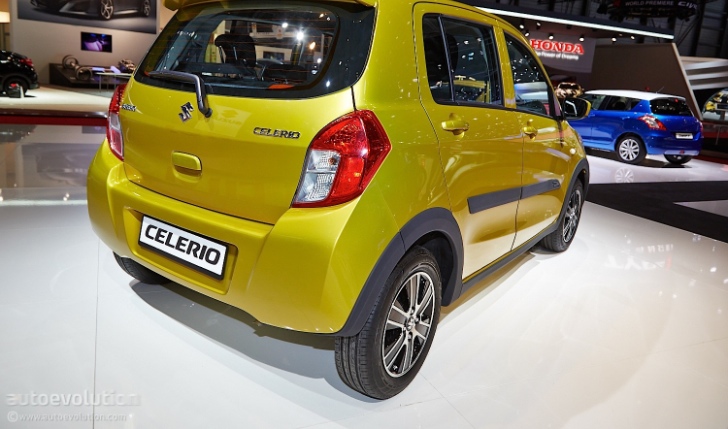City cars seem to be on the agenda this year in Geneva. The biggest roster of minis we've ever seen in one place is present there, most of them coming from the French companies. However, Suzuki is still a big player in the mini segment and they've just announced a brand new model called the Celerio.
The car is built in India by the Maruti Suzuki venture and is likely to replace the Alto when it goes on sales. We caught up with the Celerio at Suzuki's stand in Geneva and wondered how much of the Indian market character is left in the car.
As you can see in photo gallery below, quite a lot actually. The rear overhang is way to short and makes the Celerio look a little cheap. So do the black plastic side skirts, which are too short and don't cover the underbody and the jacking points correctly.
So is it a bad car? Well… no not when you consider how many flaws the Alto has. It's also going to be a roomy car. At 3,600mm long and 1,600 wide, it's larger than the French rivals. The engine options will be limited to a aluminum block 1-liter three-cylinder petrol unit that makes 68PS at 6000rpm and a peak torque of 90Nm at 3500rpm. The standard gearbox is a five-speed manual, with an automated manual to be added soon.
The engine developed for the European market is called the K10C and features automated stop/start and a new dual-injection system developed from Suzuki's motorbikes. Thanks to these changes, the Celerio is supposed to emit just 85 grams per kilometer, a class-leading figure.
Key dimensions
As you can see in photo gallery below, quite a lot actually. The rear overhang is way to short and makes the Celerio look a little cheap. So do the black plastic side skirts, which are too short and don't cover the underbody and the jacking points correctly.
So is it a bad car? Well… no not when you consider how many flaws the Alto has. It's also going to be a roomy car. At 3,600mm long and 1,600 wide, it's larger than the French rivals. The engine options will be limited to a aluminum block 1-liter three-cylinder petrol unit that makes 68PS at 6000rpm and a peak torque of 90Nm at 3500rpm. The standard gearbox is a five-speed manual, with an automated manual to be added soon.
The engine developed for the European market is called the K10C and features automated stop/start and a new dual-injection system developed from Suzuki's motorbikes. Thanks to these changes, the Celerio is supposed to emit just 85 grams per kilometer, a class-leading figure.
Key dimensions
- Overall length 3,600 mm
- Overall width 1,600 mm
- Overall height 1,530 mm/1,540 mm
- Wheelbase 2,425 mm
- Treads Front 1,420 mm
- Luggage capacity (VDA) 254 liters


















